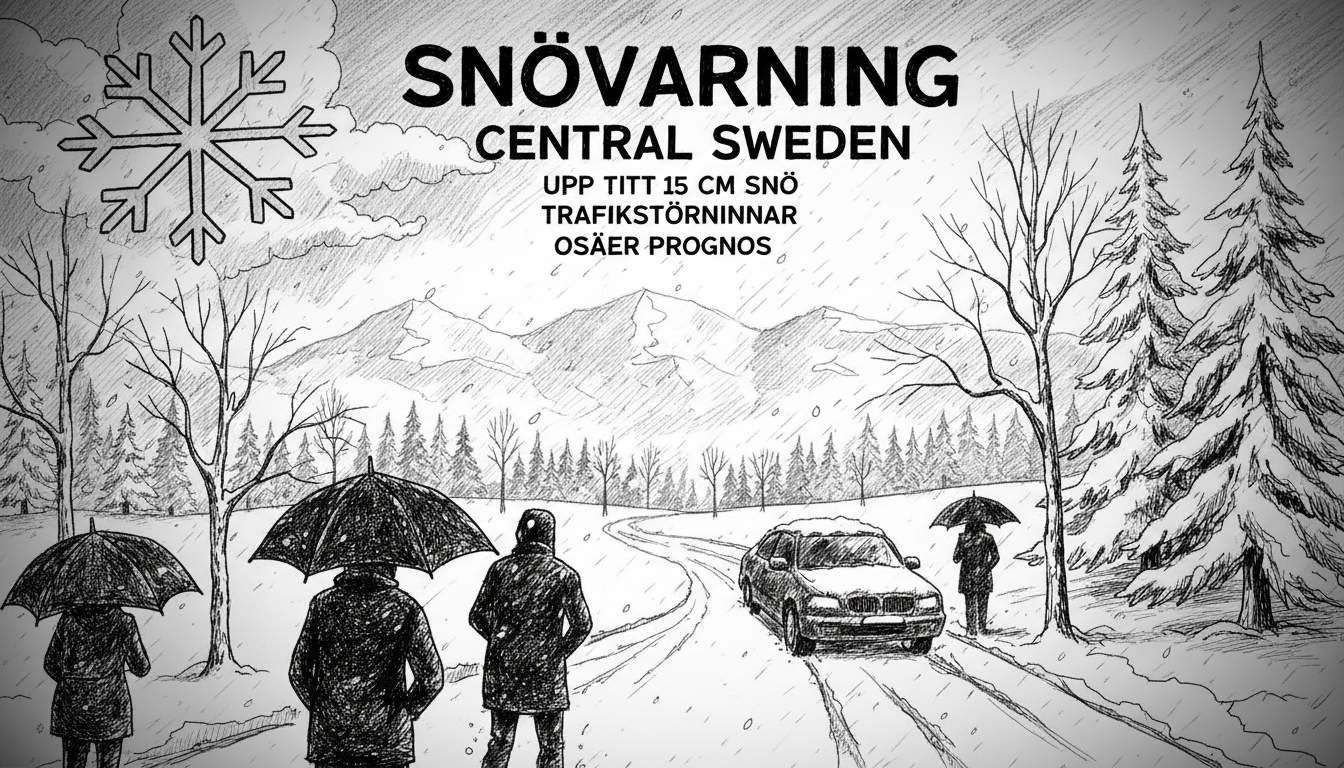Swedish meteorological authorities have issued fresh yellow weather warnings for heavy snowfall across central regions. The alerts cover Svealand and may expand toward southern areas. Meteorologist Caroline Vahlberg confirmed the developing situation.
Substantial snow accumulation is expected during Wednesday morning and afternoon. The affected zone stretches from Örebro through Eskilstuna, Västerås, and Sala toward Tierp in Uppland. Traffic disruptions are likely due to slippery roads and reduced visibility.
Existing warnings remain active in Västra Götaland county. These cover coastal areas and Skaraborg region. Snow showers are already moving into the Gothenburg area and spreading eastward.
Between 5 to 10 centimeters of snow accumulation is forecast for most areas. Some localized spots could receive up to 15 centimeters. Meteorologists note particular uncertainty about exact snowfall distribution.
Caroline Vahlberg explained the forecasting challenges. She said prediction models have shown inconsistency in this weather system. Officials hesitate to specify exact locations for heaviest snowfall due to this uncertainty.
From Wednesday evening, new warnings take effect for inner southern Götaland. The Växjö area faces potential expansion of alerts southward. These could extend over Skåne and northern Blekinge counties.
Winter weather preparedness becomes crucial during such widespread snow events. Swedish transportation authorities typically deploy extra resources during yellow warnings. Commuters should expect delayed public transport and hazardous road conditions.
International readers might find Sweden's color-coded warning system informative. Yellow represents the middle level in Sweden's three-tier alert system. It indicates weather conditions that could pose real danger to the public and require extra caution.
Previous similar snow events have caused major transportation disruptions. Last winter's comparable snowfall led to numerous vehicle accidents and train delays. Road maintenance teams are likely pre-treating major highways and prioritizing emergency routes.
Business impacts from such weather systems typically include delivery delays and reduced retail foot traffic. Many Swedes will likely work remotely where possible. Schools in hardest-hit areas might implement adjusted schedules or remote learning.
The snow comes during a period when Sweden typically experiences transitional winter weather. Such late-season snowstorms can be particularly disruptive as municipalities begin transitioning from winter to spring maintenance protocols.

